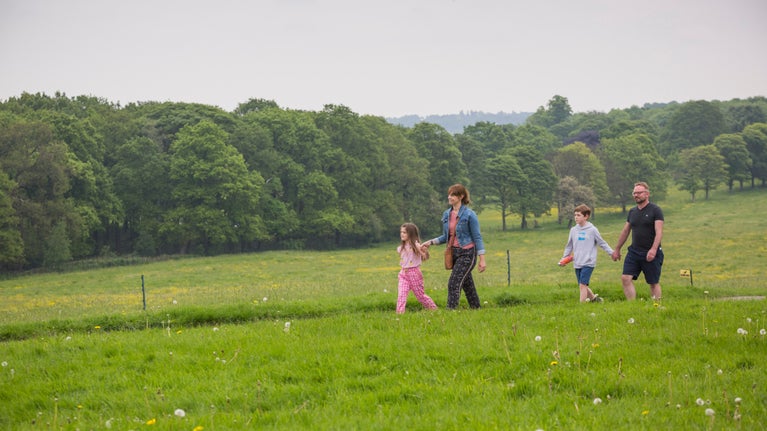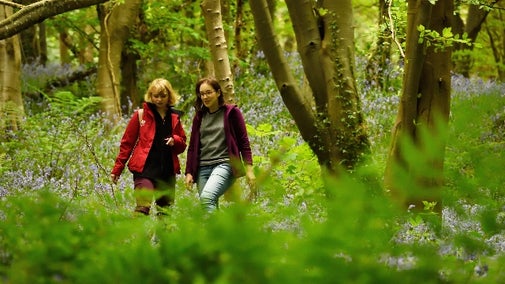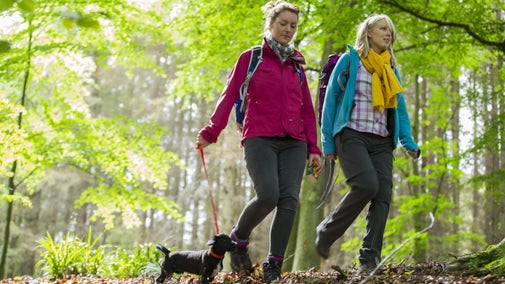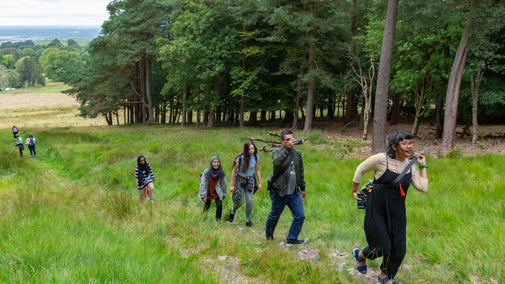Lanhydrock Parkland walk
Cornwall
This moderate circular walk is a great way to explore Lanhydrock's ancient woodland and riverside paths, as well as open parkland and East Avenue. The estate's organic parkland near Bodmin is full of traditional grassland flowers, bluebell woods in late spring, ancient trees, fascinating fungi and wildlife.
Near to
LanhydrockStart point
Lanhydrock main visitor reception, grid ref: SX088636Trail information
*Mix of surfaced paths, stony tracks and pasture, with some ascent and descent. For further details, please see Terrain section.
**Challenging but manageable with an all-terrain mobility vehicle. For further details, please see Access section.
***Dogs welcome on leads. For further details, please see Facilities section.
More near here
Lanhydrock
Magnificent late Victorian country house with garden and wooded estate.

Lanhydrock Respryn Ramble
Look out for kingfishers, otters and traces of Cornwall's tin mining past, on this beautiful circular walk along the River Fowey and on through Lanhydrock's ancient woodland.

Lanhydrock Garden explorer trail
The garden at Lanhydrock is full of hidden details to discover, a glorious mix of history and nature that can be experienced throughout the year.

Lanhydrock Great Wood and Beech Avenue walk
Lanhydrock is home to a wide variety of veteran and ancient trees, perfect homes for wildlife – and your companions on this gentle circular walk.

Get in touch
Our partners

We’ve partnered with Cotswold Outdoor to help everyone make the most of their time outdoors in the places we care for.
You might also be interested in
Walking
Explore some of the finest landscapes in our care on coastal paths, accessible trails, woodland walks and everything in between. Find the best places to walk near you.

Cotswold Outdoor: our exclusive walking partner
Learn about the National Trust’s ongoing partnership with Cotswold Outdoor. Find out how they help us care for precious places and the exclusive discount available for National Trust supporters.

Staying safe at National Trust places
The special places in National Trust care sometimes come with a few risks for visitors, be it coastline or countryside. Find out how to keep safe throughout your visits.

Follow the Countryside Code
Help to look after National Trust places by observing a few simple guidelines during your visit and following the Countryside Code.

Outdoor activities at Lanhydrock
Find out how to take part in outdoor activities across the Lanhydrock estate, from cycling and running to horse riding and fishing.

Eating and shopping at Lanhydrock
Find out where to stop for food and drink on the Lanhydrock estate, along with the best places to shop for souvenirs and gifts.

Visiting the estate at Lanhydrock
There are lots of things to look out for while exploring the outdoors, from a wide variety of wildlife species to the hidden history of the Lanhydrock estate. Here, we round up some of the things you can expect to see.

Walking in Cornwall
From strolls that reward you with stunning views of the South West coast to gentle inland meanders, these are some of the best walks in Cornwall.







